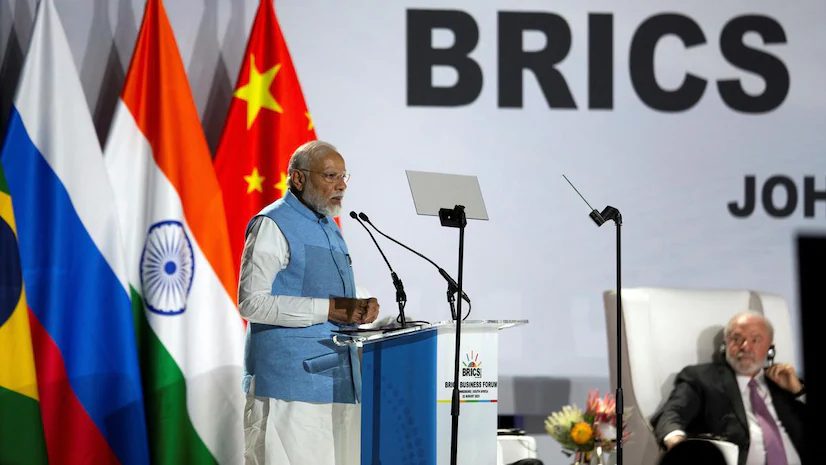India’s BRICS Dilemma: Why China’s Offer Trumps the US in 2025
Geopolitical tensions heat up as Beijing outmaneuvers Washington with a sweeter deal for New Delhi.
BRICS reshuffles the deck—and India holds the wild card.
While Wall Street scrambles to keep up (as usual), China’s playing 4D chess with trade terms that’d make a VC blush. No fancy footnotes—just hard currency and infrastructure on the table.
One question remains: When the music stops, who’ll be left without a chair?
India BRICS Relations Face US Pressure Amid China Conflicts and Myths

Trump’s Tariff Ultimatum Reshapes Strategic Calculations
The diplomatic storm was actually triggered when Trump announced the tariffs starting August 1st, targeting what he called India’s trade barriers. His frustration was made clear through social media posts, and the situation escalated quickly.
Trump said:
The President also mocked India’s position by announcing an oil collaboration with Pakistan, saying:
He also criticized India’s purchasing patterns in a lengthy post:
Right now, the $45.7 billion trade deficit with the US adds fuel to the fire. These actions expose Washington’s approach to India-BRICS relations, and it’s becoming clear that the partnership has been more transactional than strategic.
Rubio’s Energy Partnership Criticism
Secretary of State Marco Rubio has been particularly vocal about India’s energy purchases from Russia, describing them as problematic. Speaking to Fox Radio, Rubio explained the situation regarding why did India join BRICS and its current energy needs, saying:
India’s Ministry responded to these criticisms, with the Ministry of Commerce & Industry stating:
China Extends Olive Branch Through BRICS Framework
While tensions with the US escalate, China has actually been positioning itself differently regarding India BRICS relations. At the 2025 BRICS Summit in Rio de Janeiro, China supported India’s bid for UN Security Council reform, and observers saw this as a significant gesture.
The economic benefits are already tangible for India. The BRICS-led New Development Bank along with AIIB have financed significant projects. India receives $12 billion from AIIB and $7.5 billion from NDB loans, making it a major beneficiary of these alternative institutions.
Reports suggest that India’s NITI Aayog has actually proposed easing Chinese investment rules, allowing 24 percent stakes without security clearance. This addresses some causes of conflict between India and China through economic cooperation, and it signals a potential shift in policy.
India’s Position Creates Uncertainty
National security analyst Derek J. Grossman noted the severity of current India-China-US relations, observing that the current situation represents the worst in India US relations in decades, with 25 years of progress appearing undone.
The BRICS bloc represents 56 percent of global population along with 44 percent of GDP. Right now, India must balance its BRICS partnerships against Western pressure. The diplomatic standoff continues while observers watch whether India kicked out of BRIS scenarios could actually materialize.
This crisis represents a critical juncture that could determine India’s future alignment between strengthening ties through BRICS or pursuing closer US relationships despite recent setbacks. At the time of writing, the situation remains fluid, and India’s choices will have lasting implications for global geopolitics.

